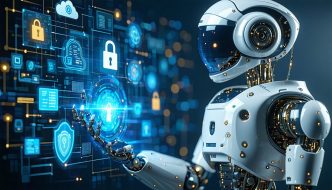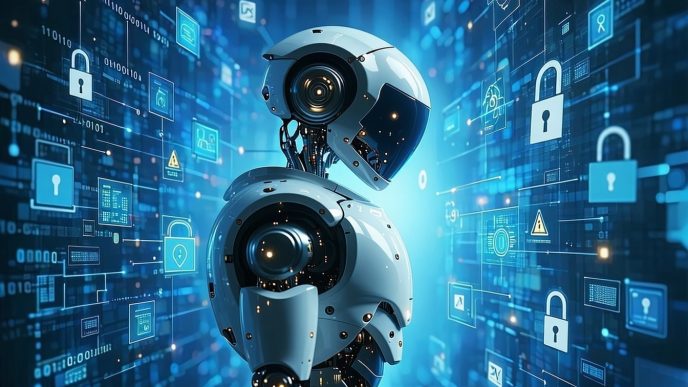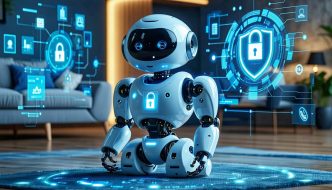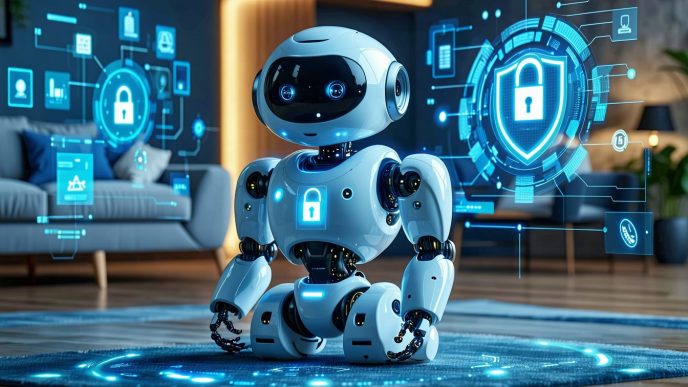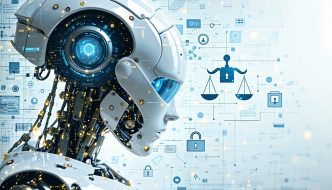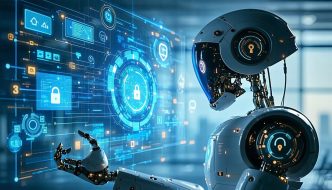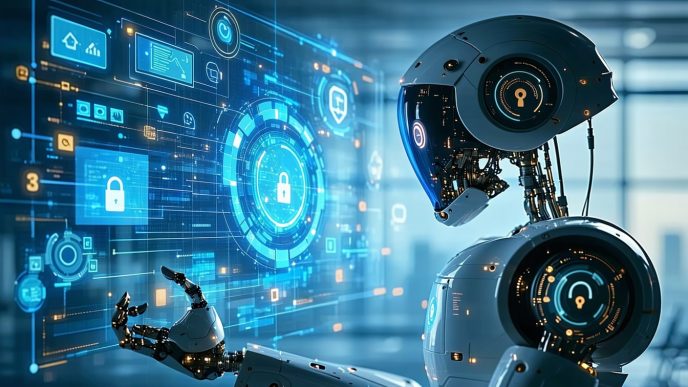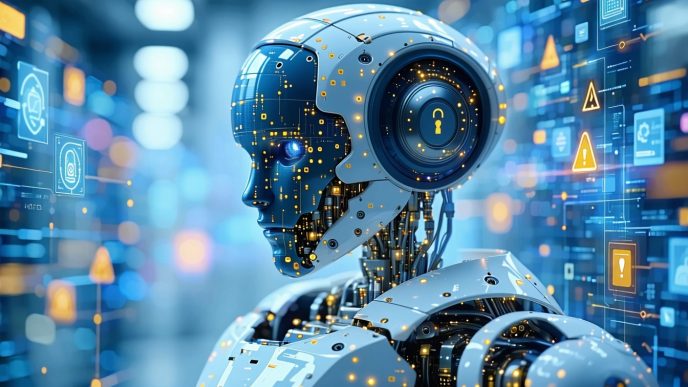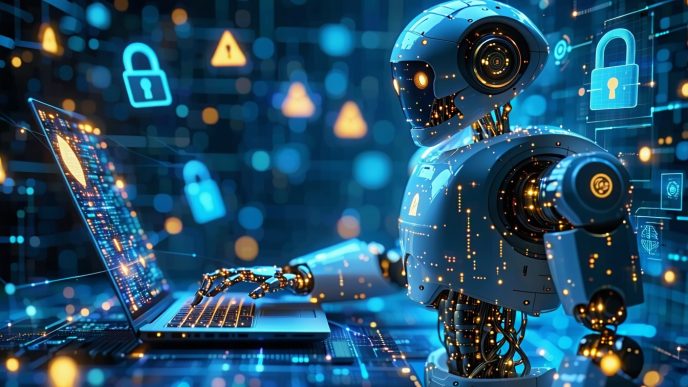Concepts of Data Collection by Robots
Understanding how robots collect and store data is essential for homeowners, parents, and tech adopters who prioritize privacy. This section provides an overview of data collection methodologies and the types of information gathered by robots.
Understanding Data Collection
Data collection by robots involves gathering information through various sensors and processing that information for utility or operational purposes. Robots are designed to observe their environment and interact with users, which results in the accumulation of data over time. This data can include both direct input from users and indirect data derived from the robot’s activities.
Smart robots typically utilize two primary methods for data collection:
- Active Collection: Robots actively gather data by engaging with their environment through cameras, microphones, and other sensors.
- Passive Collection: This involves the monitoring of user interactions and environmental changes without user prompts, allowing robots to learn and adapt over time.
Types of Data Gathered
Robots collect various types of data to enhance functionality and improve user experience. Below is a summary of the primary data types:
| Type of Data | Description |
|---|---|
| Audio Data | Captured through microphones, allowing for voice commands and environmental sound recognition. |
| Visual Data | Gathered using cameras, this data helps robots understand their surroundings and identify objects or individuals. |
| Behavioral Data | Information on how users interact with the robot, which can inform future operations and preferences. |
In addition to these categories, robots may also collect metadata, such as timestamps and operational logs, which can help in analyzing performance and user behavior. Understanding how these different data types are collected lays the groundwork for identifying potential robot data privacy and safety concerns that consumers should be aware of.
Awareness of these methodologies helps form informed decisions about the security and privacy settings, especially concerning robot microphone and camera security practices.
Everyday Information Collected
As robots become more integrated into households, they gather various types of information on a daily basis. Understanding the nature of this data collection helps homeowners and privacy-conscious consumers make informed decisions regarding their robotic devices.
Audio Data
Many robots utilize microphones to collect audio data. This data can include voice commands, ambient sounds, and conversations occurring within the home. The potential for unintended recording raises privacy concerns, as sensitive information may be captured unbeknownst to users.
| Type of Audio Data | Description |
|---|---|
| Voice Commands | Instructions given by users to operate the robot. |
| Ambient Sounds | Background noise and sounds from the environment. |
| Conversations | Interactions between individuals that may be overheard. |
Users should be aware of how audio data is stored and used by their robots. For more insights into risks related to microphones and cameras, refer to our article on robot microphone and camera security.
Visual Data
Visual data is collected through cameras incorporated into many robotic devices. This can include images and video of the surrounding environment, which is crucial for navigation and task execution. However, the capturing of visual data also poses significant privacy risks.
| Type of Visual Data | Description |
|---|---|
| Environmental Images | Photographs or video footage of the space. |
| User Interaction | Visual information related to how users interact with the robot. |
| Monitoring Activity | Observations of activities taking place within the home. |
Homeowners should understand how their robots utilize and store visual data. For further information on data sharing by robots, see our article on robot data sharing with companies.
Behavioral Data
Robots also collect behavioral data to optimize their performance and user experience. This data can encompass usage patterns, response times, and user preferences. Understanding this information can provide insights into how robots adapt to individual households.
| Type of Behavioral Data | Description |
|---|---|
| Usage Patterns | Frequency and duration of robot activity. |
| Response Times | Efficiency in executing commands. |
| User Preferences | Customized settings based on user interaction. |
This type of data can be beneficial for enhancing the functionality of robots. However, it is important for consumers to be aware of how this information is monitored and stored. For details on storage methods, refer to our article on cloud storage vs local storage in robots.
By recognizing the types of data collected by robots, individuals can better evaluate the implications for personal privacy and security. For additional considerations regarding privacy settings, consider our article on privacy settings in home robots.
Storage and Usage of Data
Understanding how robots collect and store data is crucial for homeowners and privacy-conscious consumers. This section describes data storage practices as well as how the collected information is used and shared.
Data Storage Practices
Robots typically store data either locally or in the cloud. Local storage involves saving data directly on the robot’s internal memory, while cloud storage includes sending data to external servers for safekeeping. Each method has its own advantages and risks.
| Storage Type | Description | Advantages | Risks |
|---|---|---|---|
| Local Storage | Data stored on the robot’s hardware | Immediate access, no internet required | Data loss if the robot is damaged |
| Cloud Storage | Data sent to external servers | Accessible from anywhere, backup options | Vulnerable to security breaches |
Robots may also employ encryption techniques to enhance the security of stored data. Clear privacy policies are essential, outlining how long data will be retained and under what conditions it can be accessed or deleted.
For a deeper dive into local versus cloud storage, see our article on cloud storage vs local storage in robots.
Data Usage and Sharing
The information robots collect can serve various purposes. This data may improve robot functions, aid in machine learning processes, or enhance user experience. However, users should be aware of potential sharing practices.
Companies that manufacture robots might share data with third parties, including service providers and developers. It is crucial for users to understand the extent of this sharing and the implications for privacy.
| Data Usage Category | Description | Potential Sharing |
|---|---|---|
| User Experience Improvement | Data used to enhance functionality and service | Shared with developers for improvements |
| Marketing Purposes | Data analyzed for targeting and advertisements | May be shared with marketing partners |
| Research | Data aggregated for analytical purposes | Shared with research organizations |
For further information on data sharing and its implications, refer to our article on robot data sharing with companies.
Being aware of how robots collect and store data, along with their usage and sharing practices, is vital for protecting personal information. Review privacy settings in smart devices to control the extent of data collection and sharing. See our article on privacy settings in home robots for practical tips.
Risks and Concerns
As robots become more integrated into daily life, understanding the potential risks associated with their data collection practices is essential. Two primary areas of concern are privacy risks and security risks.
Privacy Risks
Privacy risks arise when robots collect sensitive data about individuals and their environments. This data can include audio recordings, visual imagery, and behavioral patterns. Homeowners, parents, and privacy-conscious individuals should be aware of the following privacy concerns:
| Privacy Concern | Description |
|---|---|
| Unauthorized Data Collection | Robots may collect more data than originally intended, including conversations and personal interactions. |
| Data Misuse | Collected data can be used by companies for targeted advertising or third-party sharing without the user’s consent. |
| Inadequate Control | Users may not have sufficient control over what data is collected or how it is used, leading to potential violations of privacy. |
For more information on privacy standards that should be in place, see our article on robot data privacy and safety concerns.
Security Risks
Security risks involve the potential threats that arise when robots are connected to the internet or other networks. Vulnerabilities can lead to unauthorized access or manipulation of the robot’s functions. The following are notable security concerns:
| Security Concern | Description |
|---|---|
| Hacking Risks | Cybercriminals may exploit vulnerabilities to gain control over the robot, potentially using it for malicious purposes. |
| Data Breaches | Insecure data storage practices can lead to unauthorized access to personally identifiable information (PII). |
| Weak Security Protocols | Insufficient security measures can leave a robot susceptible to attacks, potentially compromising user safety. |
For more on securing your devices, visit our article on cybersecurity risks of connected robots.
Addressing these privacy and security risks is essential for maintaining a safe and respectful environment when incorporating robots into homes. By being informed about robot microphone and camera security and utilizing available privacy settings in home robots, consumers can protect their data effectively.
Protecting Your Data
As robots become increasingly integrated into households, understanding how to safeguard personal information is crucial. Protecting data starts with securing the robot itself and managing its privacy settings.
Securing Your Robot
To enhance the security of a robot, implementing robust measures is essential. This can involve both physical security and electronic safeguards. Homeowners should consider the following precautions:
| Security Measure | Description |
|---|---|
| Change Default Passwords | Use unique passwords to prevent unauthorized access. |
| Enable Two-Factor Authentication | Adds an extra layer of security during login. |
| Regular Firmware Updates | Keeps the robot software up to date and secures vulnerabilities. |
| Secure Wi-Fi Connection | Use strong, encrypted Wi-Fi protocols to protect data transmission. |
By following these security practices, individuals can help mitigate risks associated with robot data privacy and safety concerns.
Privacy Settings and Controls
Privacy settings play a vital role in managing how robots collect and handle data. Homeowners should be vigilant in configuring these settings to restrict unnecessary data collection. Key considerations include:
| Privacy Setting | Function |
|---|---|
| Camera and Microphone Control | Allows users to disable audio and visual recording functions when not needed. |
| Data Sharing Options | Gives control over whether data can be shared with third parties, including companies. |
| Access Controls and Permissions | Manages which users have access to the robot’s data and functionality. |
Homeowners are encouraged to familiarize themselves with the privacy settings in home robots and regularly review these controls to ensure they align with personal comfort levels regarding data usage.
By prioritizing these precautions, individuals can better protect their data against potential risks and ensure their privacy is respected when using robots in their daily lives. For further insights, refer to our articles on robot microphone and camera security and tips for keeping your robot secure.
Staying Informed and Safe
As robots become an integral part of daily life, understanding how they collect and store data is essential for homeowners, parents, and privacy-conscious individuals. To ensure safety and privacy, it is important to actively engage in monitoring and securing the data these devices gather.
Regularly Reviewing Data
It is vital for users to regularly review the data collected by their robots. Staying informed about the types of information being stored can help identify any potential concerns. Here is a table highlighting common types of data that may be reviewed:
| Data Type | Description |
|---|---|
| Audio Data | Recorded sounds or conversations |
| Visual Data | Images or video footage captured |
| Behavioral Data | Patterns of behavior or usage information |
Many robots provide access to their data through user-friendly interfaces. Individuals should periodically log in to these platforms to check what data has been collected, how it is stored, and whether it is being shared. Establishing regular review timelines can aid in proactively addressing any privacy issues. For further insights on data sharing, see our article on robot data sharing with companies.
Keeping Up with Updates
Updating robot software is crucial for maintaining security and addressing vulnerabilities. Manufacturers often release updates that refine data collection practices or improve privacy controls. It is advisable for users to enable automatic updates, if available, to ensure their devices work with the most current security features.
The following table outlines key aspects regarding updates:
| Update Aspect | Importance |
|---|---|
| Security Enhancements | Protect against new vulnerabilities |
| Privacy Control Updates | Improve data collection settings |
| Bug Fixes | Resolve error issues in software |
Users should also familiarize themselves with any new regulations around robot data privacy to remain compliant and educated. Maintaining awareness of developments in robotic technology will empower users to better safeguard their privacy and security.
For effective measures on securing robots, refer to our article on tips for keeping your robot secure that covers practical steps for managing access controls and permissions. Regularly monitoring data and keeping software up to date are fundamental practices for ensuring a safe environment for all users.

